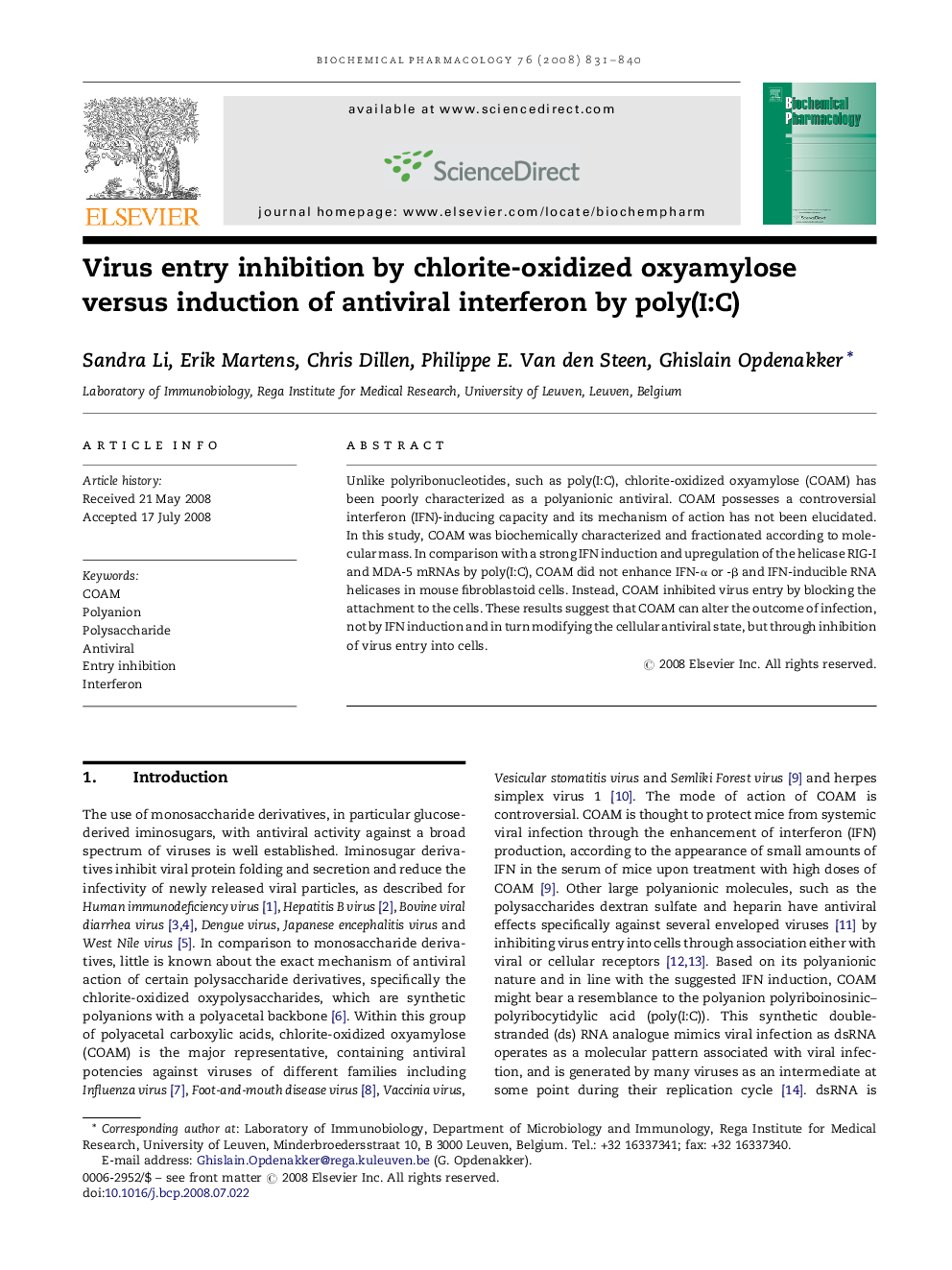| Article ID | Journal | Published Year | Pages | File Type |
|---|---|---|---|---|
| 2514660 | Biochemical Pharmacology | 2008 | 10 Pages |
Abstract
Unlike polyribonucleotides, such as poly(I:C), chlorite-oxidized oxyamylose (COAM) has been poorly characterized as a polyanionic antiviral. COAM possesses a controversial interferon (IFN)-inducing capacity and its mechanism of action has not been elucidated. In this study, COAM was biochemically characterized and fractionated according to molecular mass. In comparison with a strong IFN induction and upregulation of the helicase RIG-I and MDA-5 mRNAs by poly(I:C), COAM did not enhance IFN-α or -β and IFN-inducible RNA helicases in mouse fibroblastoid cells. Instead, COAM inhibited virus entry by blocking the attachment to the cells. These results suggest that COAM can alter the outcome of infection, not by IFN induction and in turn modifying the cellular antiviral state, but through inhibition of virus entry into cells.
Related Topics
Health Sciences
Pharmacology, Toxicology and Pharmaceutical Science
Pharmacology
Authors
Sandra Li, Erik Martens, Chris Dillen, Philippe E. Van den Steen, Ghislain Opdenakker,
